Comet Pons-Brooks suddenly sprang into action overnight, brightening by five magnitudes. Now you can see it in a 6-inch telescope.
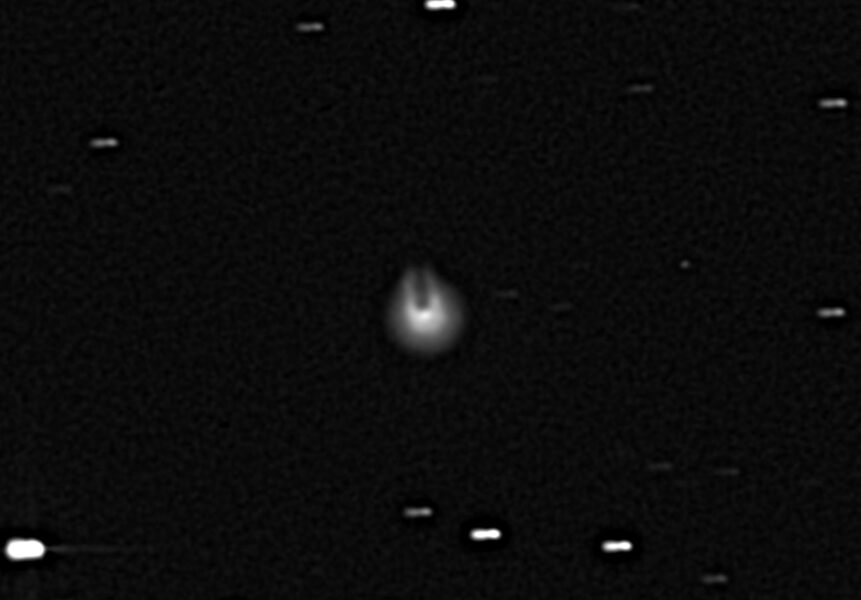
Terry Lovejoy
The periodic comet 12P/Pons-Brooks won't come to perihelion until next April, but it's already out the gate. On July 19.8 UT, the magnitude-16.6 comet had few visitors. One night later, amateur astronomers Elek Tamás, of Harsona Observatory in Hungary, spotted it at magnitude 11.6 — five magnitudes brighter! Now comet chasers can't wait for darkness to arrive so they can have a look.
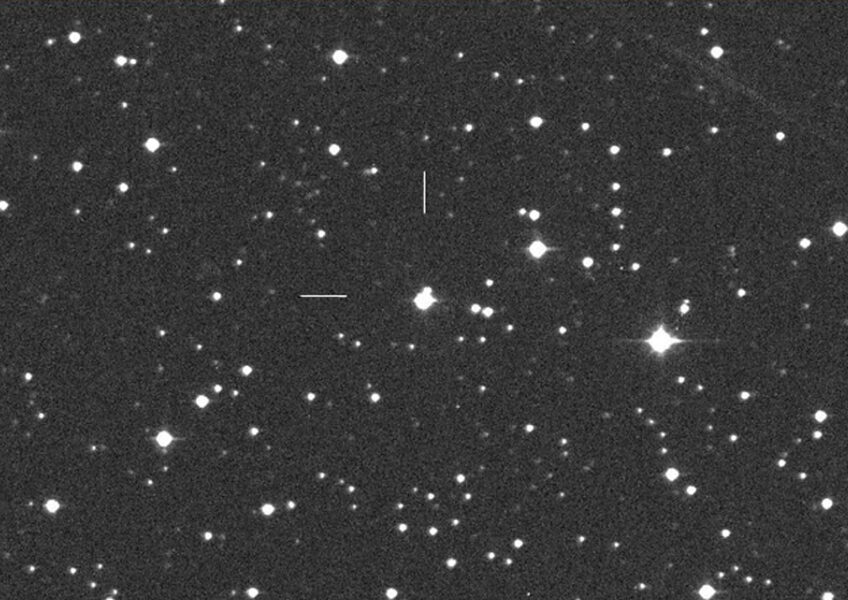
Michael Jaeger
Fortunately, the sky was clear on the night of July 20th, and the comet near the zenith not far from the head of Draco. I pointed my Dob in its direction, carefully star-hopped to the correct location and landed on an 11.4-magnitude "star." That's exactly what it looked like at low magnification. Upping the power to 242×, I suspected a coma 10″ to 15″ across, but when similar comas appeared around neighboring stars, I attributed it to light-scatter and so-so seeing. Images from the night clearly show a fuzz-free, pinpoint object.
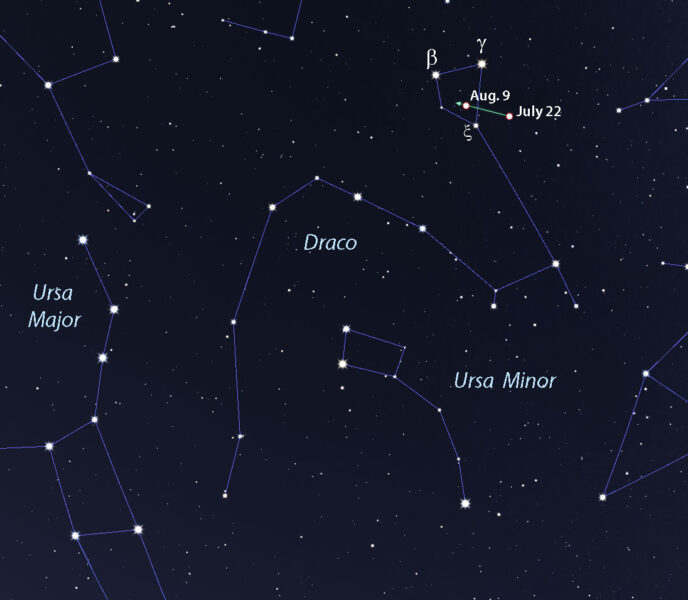
Stellarium
Comet 12P/Pons-Brooks is still more than 531 million kilometers (330 million miles) from Earth, well beyond the orbit of Mars. Given its distance and the freshness of the outburst, a stellar profile is exactly what you'd expect. That's good news for observers. Typically, an 11th- or 12th-magnitude comet would require at least an 8-inch telescope to see. But since all of its light is concentrated into a point, even a 4-inch or 6-inch scope will show it — at least for now.
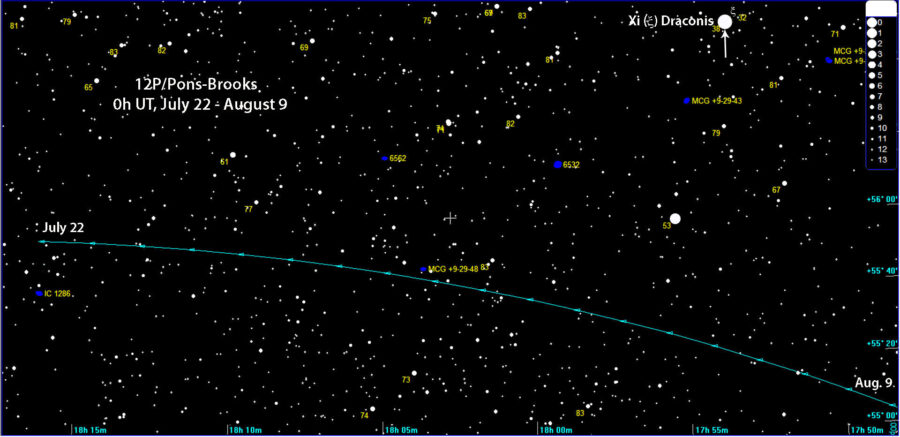
Courtesy Emil Bonanno / MegaStar
That will change. After an eruption, the debris cloud will rapidly expand. The comet should exhibit a growing coma and at the same time gradually fade. I hope you're able to grab a look over the next few nights, before the waxing Moon interferes. If your sky is plagued by wildfire smoke, at least the comet is near zenith at nightfall, where the smoke is thinnest. 12P/Pons-Brook will remain well-placed over the next few weeks as it slowly crosses into the head of Draco. I easily detected motion to the southwest in a little more than an hour thanks to its proximity to two field stars.
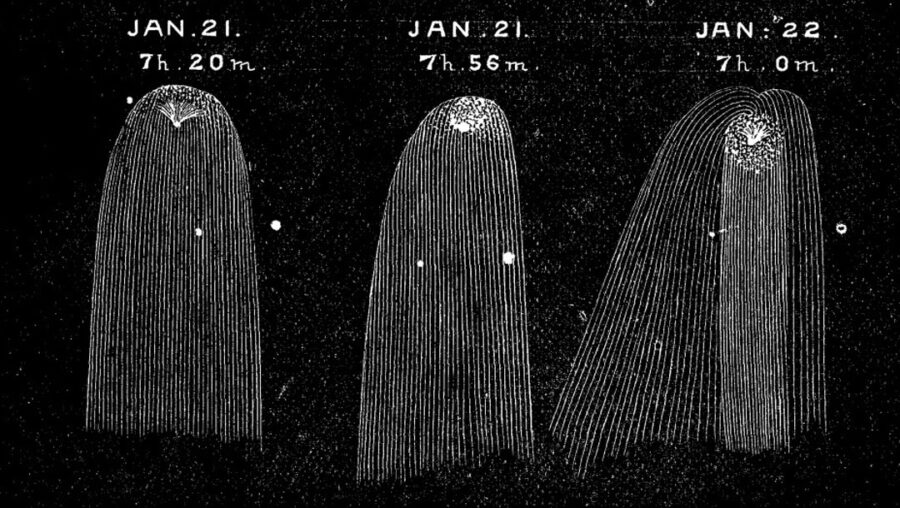
Henry Cooper Wilson
Comet 12P/Pons-Brooks was discovered in July 1812 by French astronomer Jean-Louis Pons, one of the greatest visual comet discoverers of all time. He still holds the record with 37 fuzzy flying objects to his credit. In 1883 American astronomer William Brooks accidentally recovered the comet and joined Pons as a codiscoverer. Like his predecessor, he was a prolific hunter, chalking up 27 comets, the second-highest number of visual discoveries to date. How fitting that they should share a nearly endless cosmic journey riding the same comet carriage.
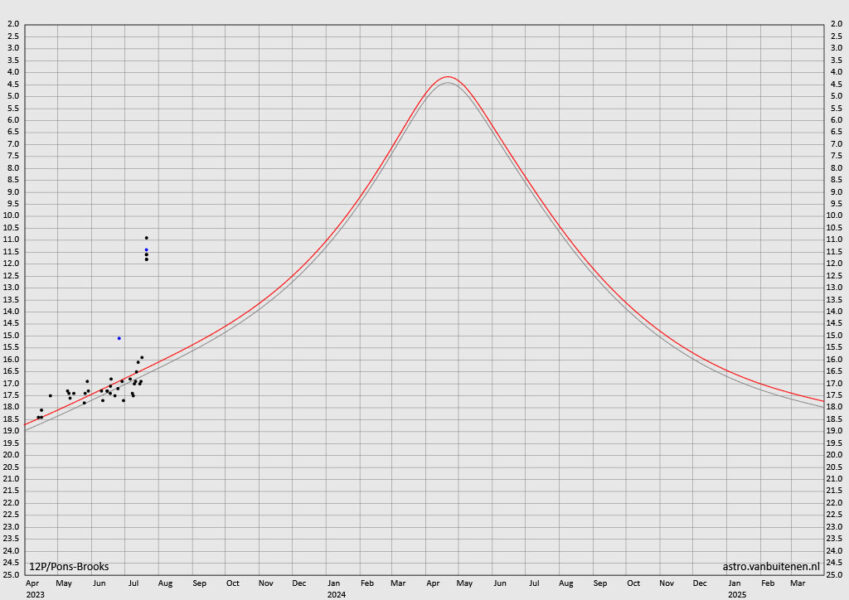
Gideon van Buitenen
For most of you, it will probably be your first opportunity ever to see Comet Pons-Brooks. With a longish orbital period of 71 years, it makes itself scarce for decades at a time. It came to perihelion last on May 22, 1954, and peaked at magnitude 6 in April that year. During both the 1883-4 and 1953-4 apparitions, it experienced multiple bright outbursts. Nice to see that it's still in character in 2023.
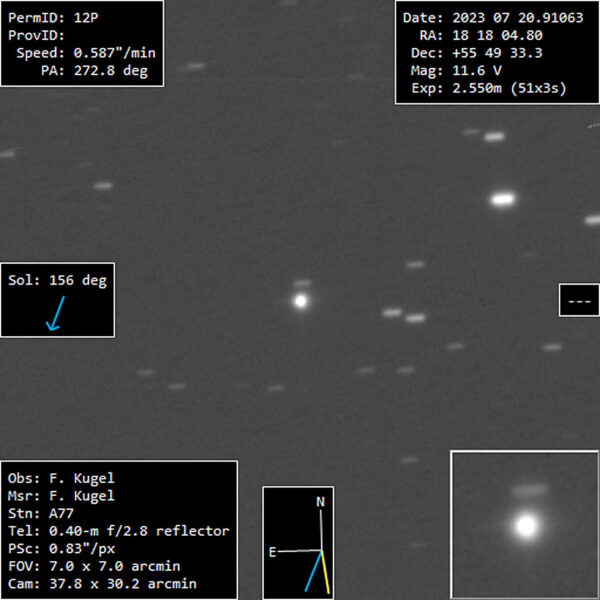
Francois Kugel
Outside of its anticipated but unpredictable flare-ups, Comet 12P/Pons-Brooks is expected to gradually brighten as it heads toward perihelion on April 21, 2024. Maximum magnitude of 4-4.5 should occur around that time, when the comet will hover low in the western sky near Jupiter during evening twilight. When closest to Earth (1.6 a.u.) on June 2nd, it will still be as bright as magnitude 6 (the naked-eye limit).
What is the source of the comet's dusty tantrums? It's likely the same or similar to what powers the frequent outbursts of Comet 29P/Schwassmann-Wachmann. According to Richard Miles, director of the Asteroid and Remote Planets Section of the British Astronomical Association (BAA), 12P/Pons-Brooks is one of about 10 periodic comets that has had outbursts, brightening five magnitudes or more, during the past two centuries.
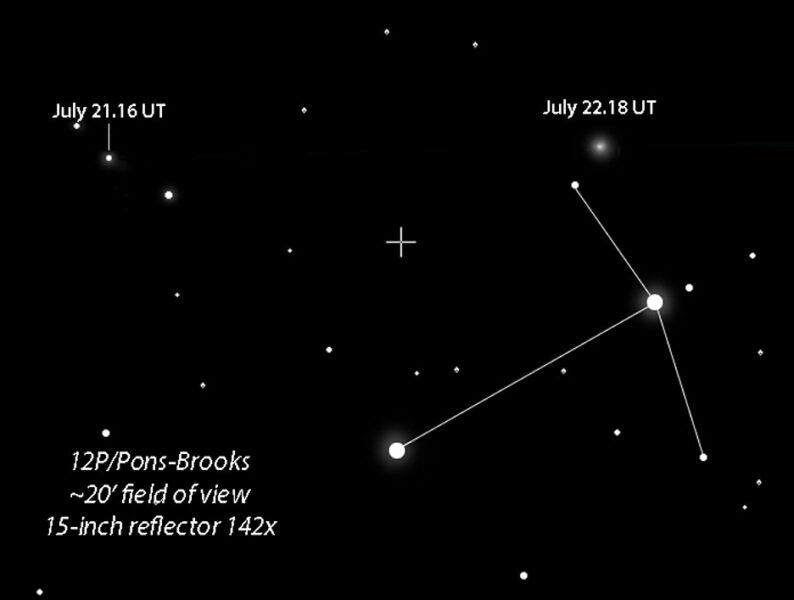
Bob King
Miles hypothesizes that carbon monoxide (CO) and carbon dioxide (CO2) dissolved in methane-rich cyromagmas beneath the comet's surface drive the regular outbursts. Solar heating weakens the overlying crust, causing dissolved CO and CO2 to escape to the surface in an explosive eruption that releases up to 1 million tons of dust and debris. Comets with long rotation periods such as 29P, which spins once about every 57 days, are prone to this type of eruption because their long "days" mean lengthy exposure to sunlight. During the cold, drawn-out nights, the eruption scar reseals, setting the stage for another outburst cycle.
With its penchant for regular blasts, Comet 12P/Pons-Brooks will make great company in the nights ahead. For a great history of the comet, visit Gary Kronk's Cometography page. Keep up on the latest photos and other details at Seiichi Yoshida's Weekly Information about Bright Comets and the Comet Observation database (COBS).
 4
4









Comments
OwlEye
July 24, 2023 at 10:57 am
Hi Bob,
Thanks for posting this article so quickly! It was the first news I had of the outburst.
I watched the clouds and levels of smoke in the sky all day yesterday, and about an hour before sunset a small thunderstorm sprang up just south of Omaha . . . and was headed right for us. By sunset, I could see the anvil top approaching, and noticed on the satellite loop that it was moving rather quickly. It became clear that the cell should be well south of our area before moonset.
Just after sunset, the storm thundered just one time and appeared to be dissipating! What was left passed over deep into twilight, and let loose a few drops of rain.
I rolled the scopes out, and waited.
Just after moonset, I star-hopped a short distance from the 6.7 mag star HD 168092, and 12P just popped right out of my Bortle 6.5 sky! The comet looked nearly uncondensed, like a featureless planetary nebula, except that one small part of the outer edge of the ~ 41 arcsec coma seemed to be a bit fainter than rest. A handy star nearby allowed me make a brightness estimate of ~ 11.3. My best view was with a Nagler 13 giving 244 X.
How wonderful it is that this comet - FAR below the reach of our 12.5-inch just 4 days ago - is so well-placed nearly at the zenith at the end of astronomical twilight!! If it doesn't fade too quickly, it could be visible in the light of the waxing moon.
Let's hope for another outburst!
Regards,
DZ
You must be logged in to post a comment.
Bob KingPost Author
July 24, 2023 at 11:16 am
Hi Doug,
What a pleasure to read your observing report. Thank you for sharing it. Hopefully the comet won't fade too quickly. Even if it does think how unique the observing circumstances are. Completely invisible for years, then a bright outburst, then a gradual fade to invisibility followed by a slow rise to even greater brightness in the months to come. I've enjoyed views three nights in a row. Missed last night because the smoke was so dense here it wasn't worth trying.
You must be logged in to post a comment.
Yaron Sheffer
July 24, 2023 at 11:44 am
My guess is that the "horns" of the coma are the result of a shadow projected behind the denser inner coma. It'd be interesting to find out the solar vector for that image, as the shadow would obviously be in the anti-Sun direction. Normally, for far enough comets along the ecliptic the shadow would not be seen, but the head of Draco is no way near the ecliptic 🙂
You must be logged in to post a comment.
Yaron Sheffer
July 24, 2023 at 11:53 am
Hmmm. Just found the image annotated with the solar vector... It's off by 35 or 40 degs from the purported "shadow"... My guess was not very successful 🙁
You must be logged in to post a comment.
You must be logged in to post a comment.